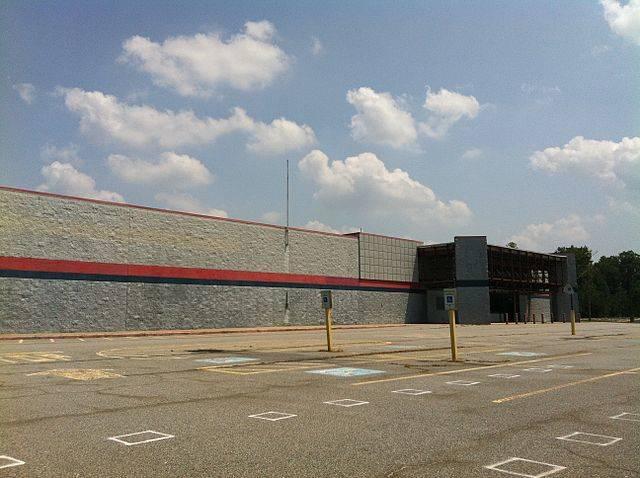
The emergence of a new Walmart store in a community has long festered angst and protests. The Arkansas-based retail giant says it provides jobs and low prices on everything from groceries to electronics. Community activists often reply that the opening of a new Walmart demolishes local businesses and replaces those jobs with lower-paying wages. That sentiment was behind the drive behind some cities, such as Inglewood, California, to vote and say no to Walmart; the state of Vermont had resisted the chain for years. The truth is somewhere in between: businesses that are adjacent to the big box store, or in its path, may actually experience a boost in foot traffic and sales; workers now score a regular paycheck that previously could have long eluded them.
But as many Walmart stores settled, only to shutter that location after less than a generation, the evidence suggests that the community left behind could find itself in a worse economic lurch than when that store first opened.
One of the more extreme cases is Ed Pilkington’s depiction in the Guardian, which describes what has been occurring in West Virginia’s McDowell County. The rural West Virginia county has long endured economic struggles and has the lowest life expectancy of the 3,100-plus counties in the U.S. While critics of Walmart say the chain contributes to the loss of any local community feeling, McDowell County’s residents had quite the opposite experience after the local superstore opened in 2005. The Walmart superstore became a thriving local gathering place, as well as the point at which shoppers could choose from an abundance fresh foods and jobseekers could find work.
But as Walmart continues to engage in a fierce turf war with Amazon – now heightened with the online marketplace’s recent acquisition of Whole Foods – Walmart has recalibrated its long-term strategy and has closed dozens of stores the past 18 months. McDowell County’s Walmart became one of the recent casualties.
Other cities and their businesses have dealt with the consequences of Walmart opening a store location, only to pack up and leave only a decade later. Seabrook, New Hampshire, was another town that welcomed Walmart despite some locals’ misgivings. As Christopher Peak pointed out in what is practically a textbook case study of how the company often operates, Walmart does what it can to find favorable terms on leasing and taxes as it opens a new store. But should another site promise more lucrative sales – even if it is just down the road, Walmart will pack up and move, leaving nearby businesses and communities behind. And unlike an old brick warehouse or school, those gigantic shells of former big box stores can rarely find a new life – the now-empty stores usually hulk over their former neighborhoods “like a gargantuan concrete coffin.”
Some communities have been able to repurpose old Walmart stores into places that can benefit local residents. The most famous example is in McAllen, Texas, where a former Walmart became a popular public library and community center. Another shuttered Walmart in Wisconsin became a senior citizens center. In Round Rock, Texas, a suburb of Austin, an old Walmart became an indoor raceway and then was eventually razed to become a strip mall. Other big box stores, which housed Walmart’s competitors such as Kmart, have been transformed into churches, charter schools and even a museum dedicated to the history of Spam. Most locations, however, remain abandoned, as their size and layout offer few alternatives for use.
Over the years, critics have pointed out that the benefits of shopping at Walmart for its low prices are often balanced out, or even exceeded, by the costs of the company’s social and economic impacts. Low paying jobs, the cost of funding social welfare programs such as health care for Walmart’s hourly wage employees as well as the shortfall in local tax revenues after municipalities are quick to make exceptions so a new store will open in town are just a few examples. But the economic struggles cities and towns shoulder once Walmart relocates or shutters a location deserve even more study, and in any event will provide even more ammunition to the company’s critics, who have long complained that the chain’s overall costs outweigh its benefits.
Image credit: Mike Kalasnick/Wiki Commons

Leon Kaye has written for 3p since 2010 and become executive editor in 2018. His previous work includes writing for the Guardian as well as other online and print publications. In addition, he's worked in sales executive roles within technology and financial research companies, as well as for a public relations firm, for which he consulted with one of the globe’s leading sustainability initiatives. Currently living in Central California, he’s traveled to 70-plus countries and has lived and worked in South Korea, the United Arab Emirates and Uruguay.
Leon’s an alum of Fresno State, the University of Maryland, Baltimore County and the University of Southern California's Marshall Business School. He enjoys traveling abroad as well as exploring California’s Central Coast and the Sierra Nevadas.














